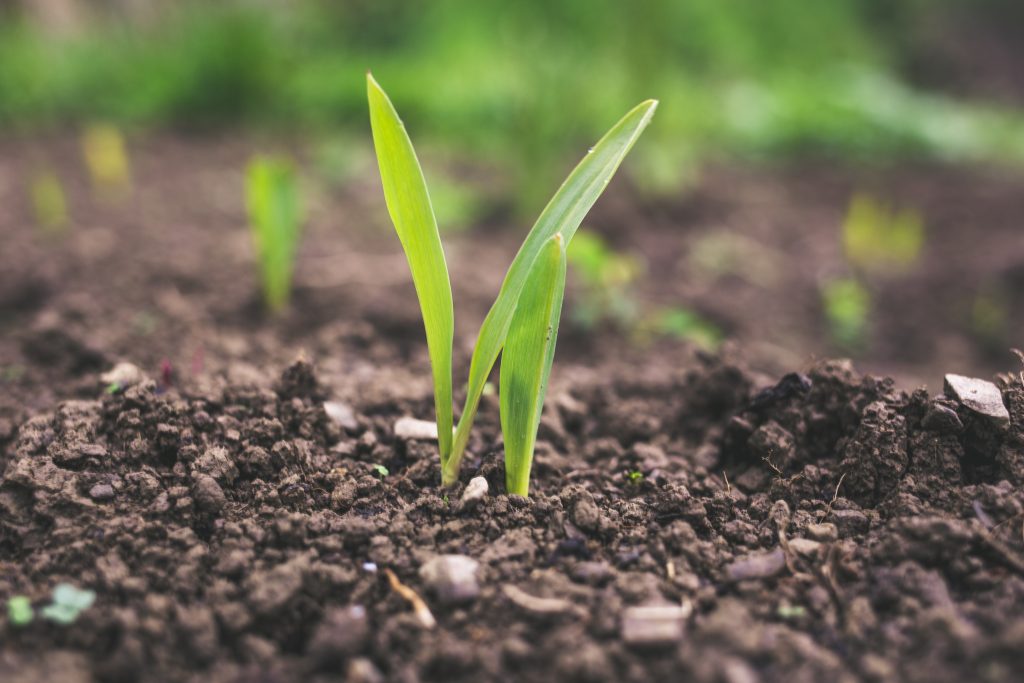Monocots and dicots differ in so many aspects, starting from the roots to the stems, then the leaves, the flowers and seeds. To know the difference between monocotyledons and dicotyledons, you first need to know what a monocot plant is and what a dicot plant is.
There’s a main difference between monocotyledons and dicotyledons which is monocots contains a single cotyledon in its embryo whereas dicots contain two cotyledons in its embryo.
Let us now understand more about the difference between monocotyledon and dicotyledon by studying its basics.
Read also: Breeds of cattle
Monocotyledons

Monocotyledons, commonly referred to as monocots, are grass and grass-like flowering plants, the seeds of which typically contain only one embryonic leaf or cotyledon.
Monocot plants are marked by seeds with a single cotyledon, parallel-veined leaves, scattered vascular bundles in the stem, the absence of a typical cambium, and an adventitious root system. Flower parts typically come in multiples of three, and the pollen grains characteristically feature a single aperture (or furrow).
Examples of monocot plants include; grasses, palm trees, bananas, orchids, onions, garlics, lilies, cereals, etc.
Note: when classifying flowers into monocots or dicots, remember that there are always exceptions to the rule. Some monocots may have a feature typically found in dicots, or vice versa. Even a few flowering plants (approximately 2%) don’t fit into either the monocot or the dicot category.
Read also: Meaning and importance of agriculture
Dicotyledons
The dicotyledons, also known as dicots, are one of the two groups into which all the flowering plants or angiosperms were formerly divided.
The name refers to one of the typical characteristics of the group, namely that the seed has two embryonic leaves or cotyledons.
Examples of dicots include; beans, buttercups, oaks, sunflowers, etc
Difference between monocotyledons and dicotyledons
Read also: Difference between alpaca and llama
Monocotyledons vs Dicotyledons
| Monocotyledon | Dicotyledon |
| The monocotyledonous embryos have a single cotyledon | The dicotyledonous embryos have double cotyledons |
| They have a fibrous root system | They have a tap root system |
| Leaves in monocots have parallel venation | Leaves in dicots have reticulate or net venation |
| In monocot flowers, the count of parts of the flower is a multiple of three or equal to three | The count of parts in a dicot flower is a multiple of four or five or equal to four or five |
| The roots and stems of monocotyledons do not possess a cambium and cannot increase in diameter | The roots and stems of dicotyledons possess a cambium and have the ability to increase in diameter |
| A few examples of monocotyledons are garlic, onions, wheat, corn and grass, etc. | A few examples of dicots are beans, cauliflower, apples and pear, etc. |
Characteristics of monocotyledons
- They have an embryo with a single cotyledon.
- Pollen with a single furrow or pore.
- They have flowering plants in multiples of three.
- They are flowering plants (angiosperms).
- Major leaf veins are parallel.
- Stem vascular bundles scattered.
- Roots are adventitious.
- Secondary growth absent.
Read also: How to control weed in lawns
Characteristics of dicotyledons
- The seeds are divided into two halves.
- They have two seed leaves or cotyledon.
- Flower plants are in multiples of four or five.
- Major leaf veins are reticulated.
- They have (3) three furrows or pores in it’s pollen (triporate).
Examples of monocotyledons and dicotyledons
Some common examples of dicotyledonous and monocotyledonous plants are as follows:
Dicotyledons
- Apple (Malus pumila)
- Guava (Psidium guajava)
- Lychee (Litchi chinensis)
- Mango (Mangifera indica)
- Papaya (Carica papaya)
- Pea ( Pisum sativum)
- Radish (Raphanus sativus)
- Rose (Rosa indica)
- Soyabean (Glycine max)
- Sunflower (Helianthus annuus)
Monocotyledons
- Barley (Hordeum vulgare)
- Bread wheat (Triticum aestivum)
- Coconut (Cocos nucifera)
- Date palm (Phoenix dactylifera)
- Maize (Zea mays)
- Oat (Avena sativa)
- Ragi (Eleusine coracana)
- Rice (Oryza sativa)
- Sorghum (Sorghum bicolor)
- Sugarcane (Saccharum officinarum)
Read also: Difference between subsistence and commercial farming
The bottom line
The main difference between monocots and dicots is that of their cotyledons. The former have just a single cotyledon while the latter has a pair of cotyledons. And then again, monocots technically do not produce wood or bark but dicots do.
Read also: Difference between Annual Biennial & Perennial crops

